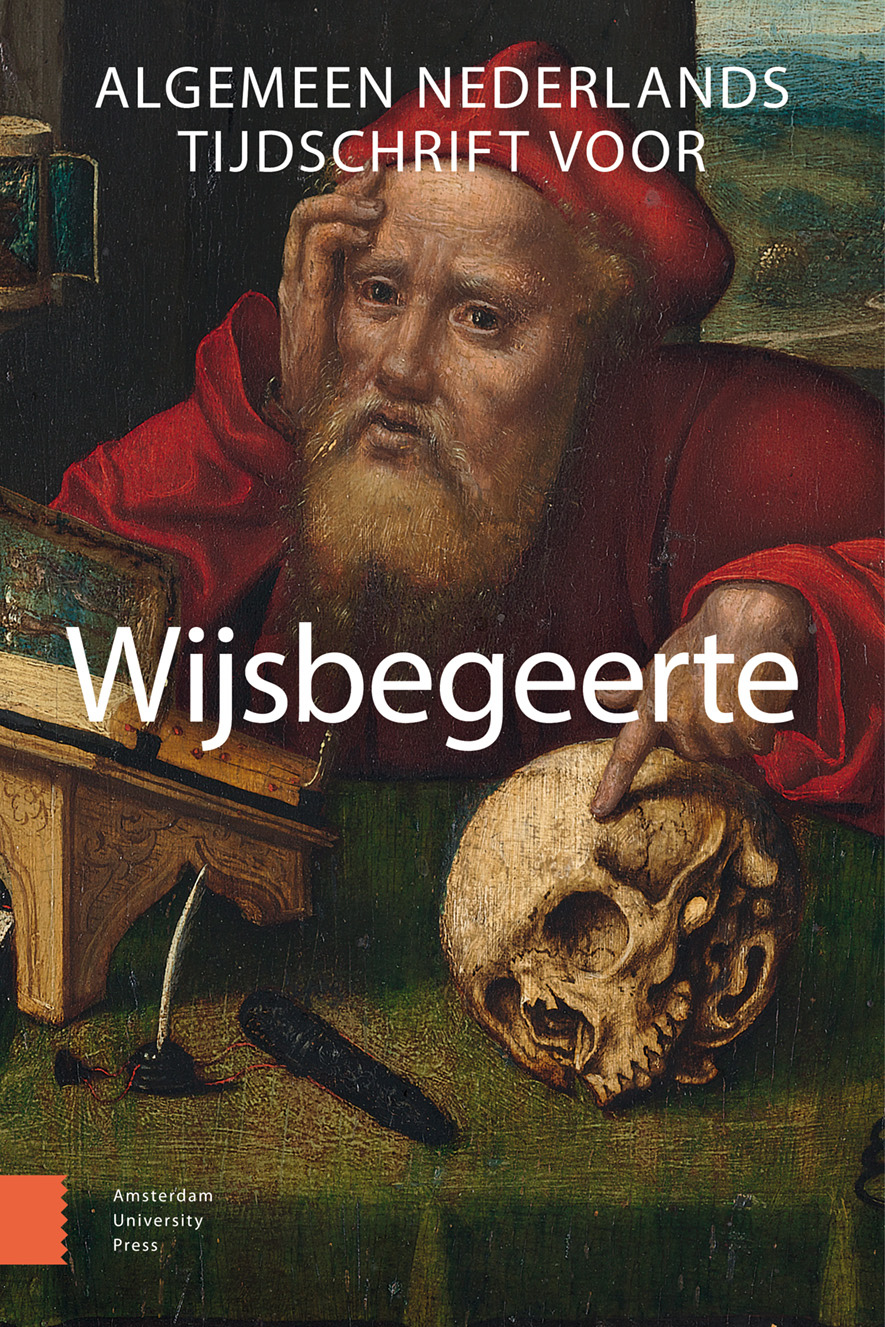- Home
- A-Z Publicaties
- Algemeen Nederlands Tijdschrift voor Wijsbegeerte
- Previous Issues
- Volume 111, Issue 3, 2019
Algemeen Nederlands Tijdschrift voor Wijsbegeerte - Volume 111, Issue 3, 2019
Volume 111, Issue 3, 2019
Taal:
Engels
-
-
oa De Nieuwe Neurofilosofie
Meer MinderAuteurs: Jolien Francken & Marc SlorsAbstract The New Neurophilosophy: An Introduction to the ANTW special issue Contemporary neurophilosophy is more pragmatic than the early neurophilosophy of the 1980’s. It features two implicit ideas: First, commonsense cognitive concepts (CCC’s) like ‘free will’, ‘thoughts’, ‘consciousness’, ‘attention’ and ‘self’, belong to a variety of disciplines and cannot be appropriated by either philosophy or cognitive neu Read More
-
-
-
oa Hoe dik is het ik?
Meer MinderDoor Monica MeijsingAbstract How fat is the I? Neuroscience and the elusive self This article explores the concept of self in relation to neuroscience. Four options are discussed on the basis of a key representative. The first is the dualist position where the non-material self controls its brain, as defended by Eccles. Next comes the option of the self as a relatively or completely powerless entity within the brain, as exemplified by Libet’s experiments o Read More
-
-
-
oa Neurowetenschappen en de Illusie van Vrije Wil
Meer MinderDoor Lieke AsmaAbstract Neuroscience and the Illusion of Free Will Currently, few neuroscientists and philosophers still defend the claim that neuroscience has shown the brain ‘decides’ what we do and that free will is an illusion. This does not imply, however, that this kind of neuroscientific research could not say anything about the existence of free will. Neuroscience can offer insights in the unconscious causes and underlying processes of Read More
-
-
-
oa Het (on)voorspelbare brein
Meer MinderDoor Leon de BruinAbstract The (un)predictable brain In this paper I give an assessment of the (potential) predictive power of brainreading technology by comparing it to our capacity to predict others’ behavior by means of mental state attribution (mindreading). I identify two constraints that are typically ignored in the literature on brainreading and discuss their implications for the predictive power of brainreading. I conclude that there is little reaso Read More
-
-
-
oa ‘Neurorecht’ in Nederland
Meer MinderDoor Stephan SchleimAbstract ‘Neurolaw’ in the Netherlands: The justification of the new adolescent penal law from a neurophilosophical perspective The possible and actual normative influence of neuroscientific research has been discussed in numerous publications. One particular part of that debate covered a number of US Supreme Court decisions since the early 2000s on the constitutionality of death or lifetime sentences for minor offenders. Read More
-
-
-
oa Representaties in cognitieve neurowetenschap
Meer MinderDoor Sebo UitholAbstract Representations in cognitive neuroscience Explanations in terms of representations are ubiquitous in cognitive neuroscience. In this paper I will show that the question of who is using the representation is of crucial importance, but not often explicitly answered. Two possible users, the scientist and the cognitive system are theoretically strictly distinct, but the distinction is in practice often blurred. It is tempting to jump f Read More
-
-
-
oa Het web-model
Meer MinderDoor Annelli JanssenAbstract The web-model: A new model of explanation for neuroimaging studies What can neuroimaging tell us about the relation between our brain and our mind? A lot, or so I argue. But neuroscientists should update their model of explanation. Currently, many explanations are (implicitly) based on what I call the ‘mapping model’: a model of explanation which centers on mapping relations between cognition and the brain. I argue Read More
-
-
-
oa Appels, peren en fruit
Meer MinderDoor Annemarie van SteeAbstract Conceptual review as task analysis method Meta-analysis is a crucial research tool in cognitive neuroscience. For meta-analysis to succeed, it is important that studies that are grouped together investigate the same cognitive process and that studies that investigate different cognitive processes are grouped apart. After all, comparing apples and oranges makes no sense. Studies’ comparability depends on the Read More
-
-
-
oa Translatie als filosofisch programma
Meer MinderDoor Gerrit GlasAbstract Translation as philosophical program: An explorative review What does the concept of translation mean in the expression ‘translational neuroscience’? What are the different steps, or components, in the translation of neuroscientific findings to psychiatry? There are serious concerns about the validity and productivity of the traditional idea of a translational pipeline, starting in the fundamental sciences (chemistry, mol Read More
-
Most Read This Month
Article
content/journals/00025275
Journal
10
5
false
nl

Most Cited Most Cited RSS feed
-
-
oa Philosophy and Wisdom
Door Peter Jonkers
-
-
-
oa Propriospect
Door Marjolein Deunk
-
- More Less

